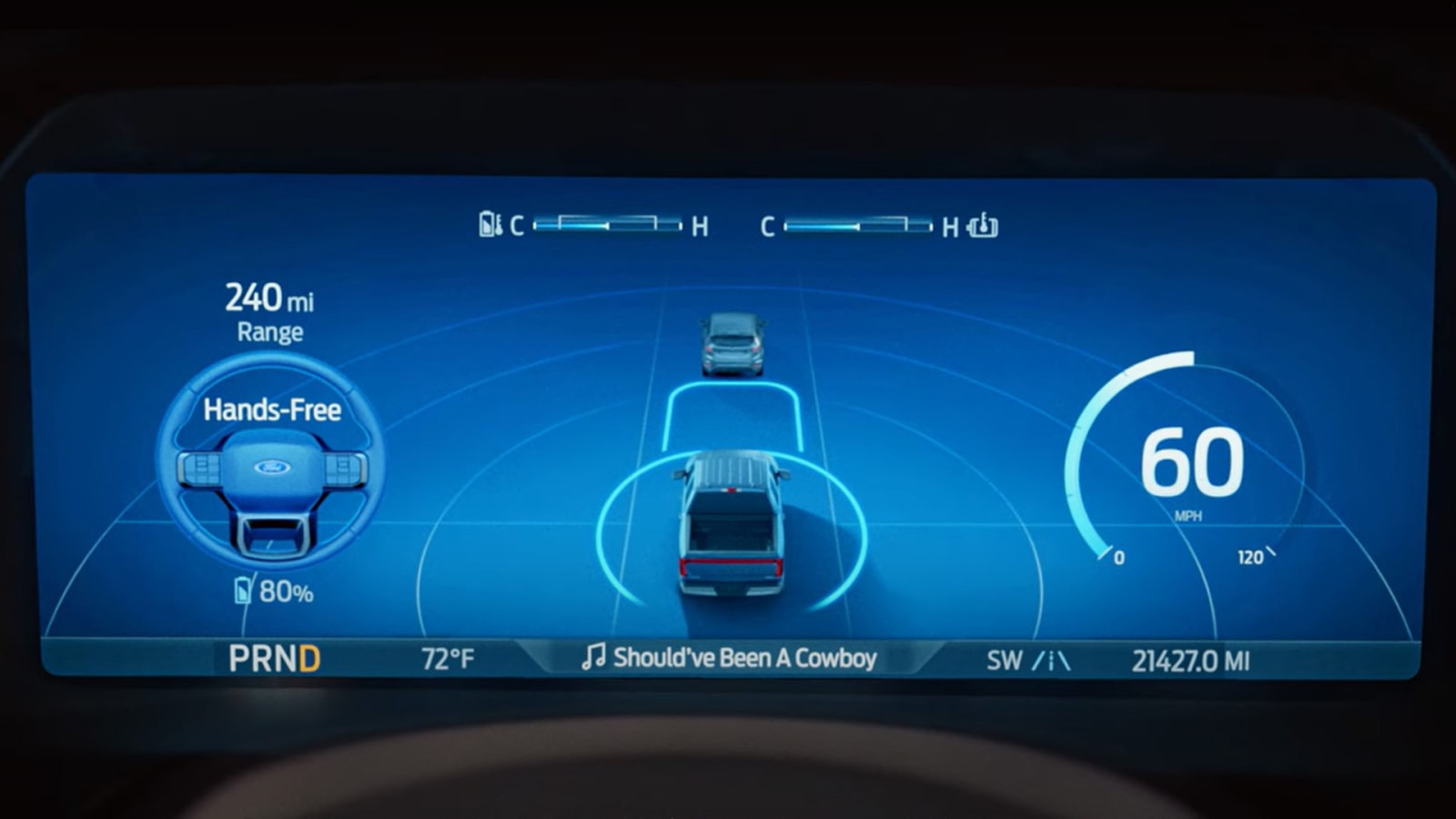SAN ANTONIO — During our first drive of the 2022 Ford F-150 Lightning, we had the opportunity to test out its BlueCruise advanced driver assistance feature. Like GM’s Super Cruise, Ford BlueCruise allows you to take your hands off the wheel on certain, preordained stretches of limited-access, divided highway.
So far, BlueCruise is only available on select models, namely the Ford Mustang Mach-E and 2022 F-150. (The Lincoln version, called ActiveGlide, is also available in the 2022 Navigator). Now the F-150 Lightning — the brand’s high-tech but otherwise familiar foray into the nascent electric pickup market — also offers BlueCruise. For this truck, BlueCruise comes as standard equipment in the range-topping Platinum trim, and is also available as an option in the Lariat.
From a technical perspective, BlueCruise uses the vehicle’s GPS and navigation data to know where it can be activated. It uses adaptive cruise control, lane-centering and road sign recognition software — as well as the forward-facing camera and radar hardware that powers them, to steer, accelerate and brake the vehicle, keeping it in its lane and a safe following distance behind any other vehicles ahead. Inside the vehicle, cameras on the driver’s side A-pillar and just to the left of the infotainment screen on the dash monitor your gaze to make sure you’re paying attention to the road and remain ready to retake control of the steering.
Here’s how it works from a practical standpoint: First, you need to activate adaptive cruise control. When you’re on a predetermined, geofenced part of the highway where the system is allowed to activate (Ford dubs these “Blue Zones,” of which there are 130,000 miles in North America so far), a message on the left side of the instrument panel will let you know you can take your hands off the wheel.
BlueCruise worked well during our drive of the F-150 Lightning, keeping us in our lane while we relaxed with our hands in our lap. The truck would gently wander in the wide lane a bit, but kept a safe berth from the lane markers, and we didn’t find ourselves intervening unless another car began encroaching upon our lane. Just like when you use hands-on adaptive cruise control, BlueCruise will maintain the speed and following distance.
Unlike GM’s Super Cruise, though, there is no lighting system on the top of the wheel to brightly indicate the system’s status. It was not always visually obvious when it would be at the ready or need you to take over, especially when our eyes were focused some distance down the road, far above and beyond the instrument panel. There was a message on the dash, and a vague audio chime. That can especially take one off guard when the system cuts out and reverts to adaptive cruise contrl mode without a consistent reason as to why the required BlueCruise criteria were no longer met. We prefer the more obvious cues of Super Cruise, as they help prevent any confusion, and allow us to better take advantage of the system when it’s ready.
There are some other limitations, of course. There are the many roads where it is simply not allowed to work, for one, and we found it asking us to take over when we were near certain interchanges or exit ramps. That problem will improve over time. So far, BlueCruise is unable to perform automatic lane changes the way systems like GM’s Super Cruise and Hyundai/Kia’s hands-on Highway Driving Assist II do. It is able to resume quickly after you manually change lanes, however. Finally, the system ceases to operate at 82 miles per hour.
As all automakers do, Ford will constantly improve its driver assist tech over time, and we doubt it will be long before more Blue Zone miles are added, and features like auto lane change are implemented. Many vehicles nowadays, the Lightning included, are capable of over-the-air updates, so you won’t have to buy the newest models to enjoy some of those future upgrades.
Related video:
Source: www.autoblog.com


